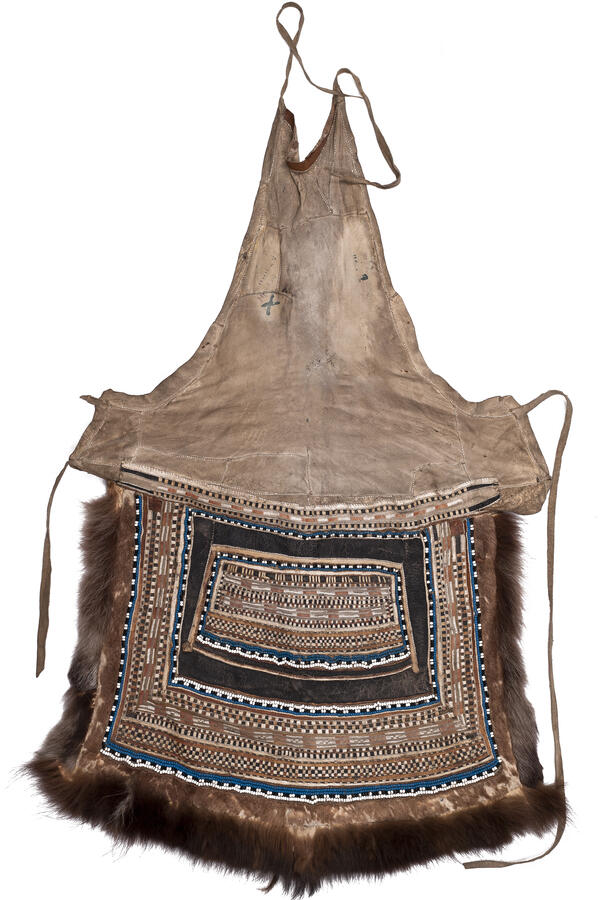The Tungusic apron was once an independent piece of clothing, as well as one of its earliest elements. It was part of the ensemble of ethnic costumes worn by many peoples of Siberia, the North and the Far East, allowing researchers to suggest that they had been closely related for a long time.
At the same time, such aprons differed slightly in shape, length and decoration in each nation. They even had different shapes for various territorial groups of the Evens — a Siberian Tungus-Manchurian people.
Nal, an apron of the Evens, was worn under a caftan, which was wrapped with straps and could not provide reliable protection of the chest from cold and wind. It was divided into two parts: the upper part, which reached the waist line and was sewn with fur inside, and the lower part, which was usually made of smooth kamus (deer leg hide) with the fur facing outward.
The upper part with a neck was tied with straps at the back of the head, while another pair of straps or just a belt encircled the waist. Winter aprons were made of skins of mountain sheep or deer of fall slaughter with clipped wool, and summer aprons were made of deerskin.
A women’s apron reached the knees, while a men’s one was shorter. The men’s aprons had a wide deerskin fringe sewn on the waist, while the women’s items were decorated with patterns, beads and embroidery with reindeer hair from under the neck.
The lower half of the apron from the museum collection was abundantly decorated with traditional geometric patterns consisting of the simplest elements: concentric circles, triangles, semicircles and dotted lines. Plant motifs appear later in the art of the Evens.
The patterns were
executed in the techniques of fur mosaic and inlay, weaving of deerskin strips,
embroidery with beads, cotton and wool threads. The edge of the hem was
bordered with a deerskin fringe decorated with metal pendants. The hem of a
woman’s apron could be adorned with bells, jingles and coins. Probably, it had
a ritual and magical meaning: when they moved, they produced a ringing sound
that scared away evil spirits.



